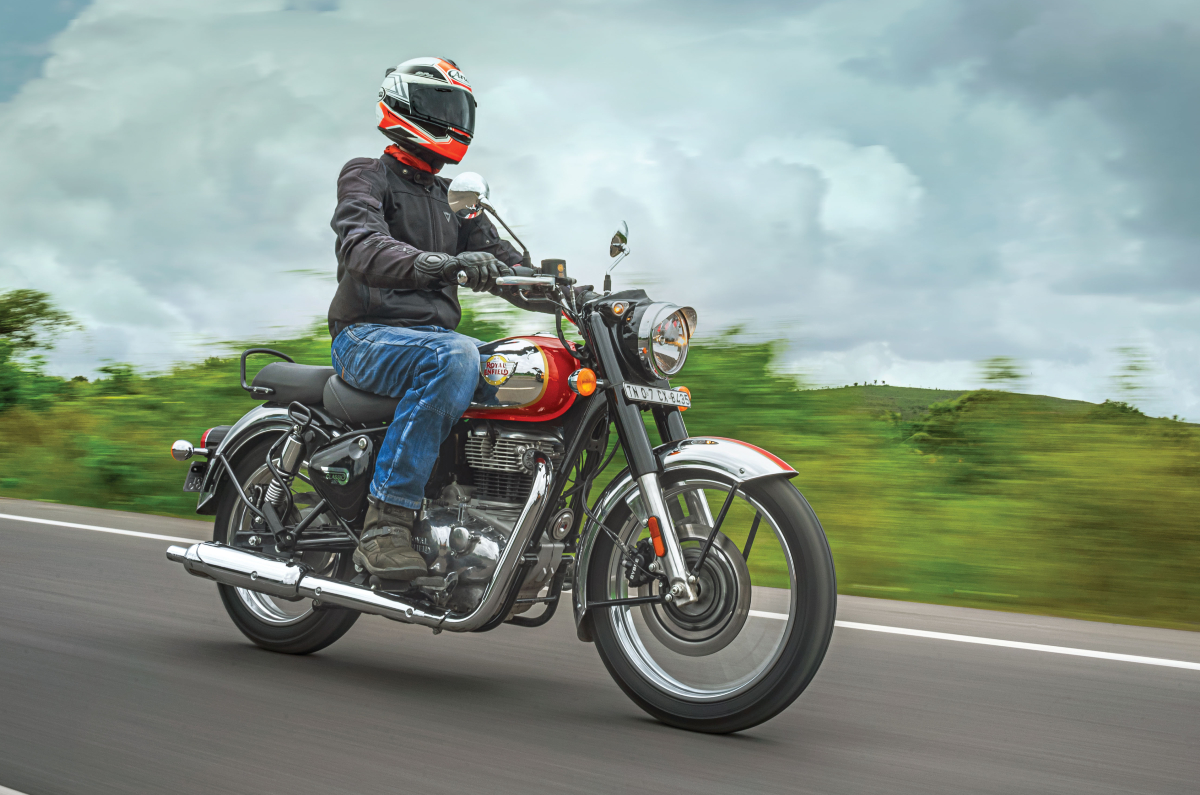Review: 2021 Royal Enfield Classic 350 review, road test

No one really likes working on Sundays. However, there are things that promise to motivate and at this point, you’d expect me to say something cliche like a hot cup of coffee and the love for motorcycles. Nah, that’s not stopping me from playing the latest Assassin’s Creed. What is, is the fact that life has kind of come full circle with this review that I’m working on over the weekend. Growing up, my father would take me for a spin on either his cast-iron Bullet 350 or diesel-powered Taurus and he’d tell me all about what made them special and how they felt to ride. And now, 20 years later, it’s my turn to do so, but with Royal Enfield’s all-new Classic 350.
Royal Enfield has also made big improvements in the chassis department. The biggest change comes in the double-downtube frame that replaces the basic single-cradle unit. While the main frame and swingarm are exactly the same as on the Meteor, the foot peg mounts are different, as is the rear subframe which enables the mounting of a different rear fender. Like with the Meteor 350, the ground clearance on the 2021 Classic 350 has climbed by 35mm, to a fairly substantial 170mm. As a result, there’s a big bump in cornering clearance as well.
While the suspension components might look the same as before, Royal Enfield has said that they aren’t and the new Classic gets a fatter 41mm telescopic fork. Even when compared with the Meteor, the Classic gets a little more damping, which results in a slightly firmer ride.
The bike has a relatively firm feel to the ride quality, but it’s not harsh or too stiff. What has come as a by-product of this suspension set-up is much more confident handling. That being said, it still doesn’t feel as agile and light on its feet as the Meteor 350. The different wheel and tyres sizes, as well as the different rider ergonomics, are probably the reasons for this. While the 2021 Classic 350 continues to use a 19-inch (front)/18-inch (rear) wheel set-up, the Meteor comes equipped with a 19-inch (front)/17-inch (rear) combination. These wheels come wrapped in a 100/90 tyre at the front and 120/80 section tyre at the rear. The Ceat tyres it comes equipped with behaved quite well in the rain.
Anchorage comes from a 300mm front disc and a 270mm rotor at the rear with dual-channel ABS – although there is a base model with a rear drum brake and single-channel ABS. Braking performance is good with a heavy pull, but the front brake feel is dull, just like the Meteor’s. Despite this, the 2021 Classic 350 managed to get from 60-0kph in 16.47m, which isn’t only better than the outgoing model, but also respectable when you consider its heavy, 195kg kerb weight.
Classic 350 owners will no longer get ridiculed for not having a fuel gauge. The latest update has added a small LCD below the analogue speedometer that displays the odometer, two trip metres and the long overdue fuel gauge. While the LCD is a nice touch, the updated analogue speedometer, with its glowing needle, looks a bit too modern. The conventional needle and white face of the older bike looked more appropriate.
The top-spec Chrome variant also comes with the company’s Tripper navigation display. It takes the low fuel light gauge’s place on the older bike, which means it doesn’t stick out or look out of place. Using Google Maps data, this system works when connected to the Royal Enfield app, and we found it to be quite intuitive and helpful. However, it doesn’t give you any call or SMS related notifications. It’s also hard to read with the sun right overhead. If you decide not to use Tripper navigation, this display will simply show you the time.
The company has said that it will offer Tripper navigation as an optional accessory on the lower-spec models in a few months’ time, when semi-conductor related supply improves. There’s a neat USB charging socket underneath the clutch lever’s mounting point, but that’s where the features list ends.
Royal Enfield has realised that its buyers like to personalise their motorcycles, which is why the
Classic 350 will have a number of accessories available straight from the factory. With the help of the online configurator, buyers will be able to choose from a number of accessories, including different alloy wheels, exhausts and seat options. The company will also be offering a lower seat option that reduces the 805mm seat height by 32mm.
With its familiar looks, it may not look like it, but the engineers at Royal Enfield have done as much as they could while not messing with what gets them the nutty sales numbers. When compared to the outgoing model, it has major improvements to the engine, frame, suspension and brakes, but without compromising on the feel that customers will expect. They’ve also added a couple of features and improved the fit and finish, while they were at it. With a starting price of Rs 1.84 lakh the single channel ABS-equipped Redditch variant is competitively priced. The Halcyon, Signals, Dark and Classic Chrome variants are progressively more expensive. The good thing is that from the Halcyon onwards, underneath the skin, all the models are more or less the same. As a package, the Classic 350 has been modernised and improved in almost every way. However, RE has also managed to retain the virtues that Classic fans tend to love and that makes this motorcycle a safe, yet worthy successor to the original.

No comments
please do not enter any spam link in the comment box